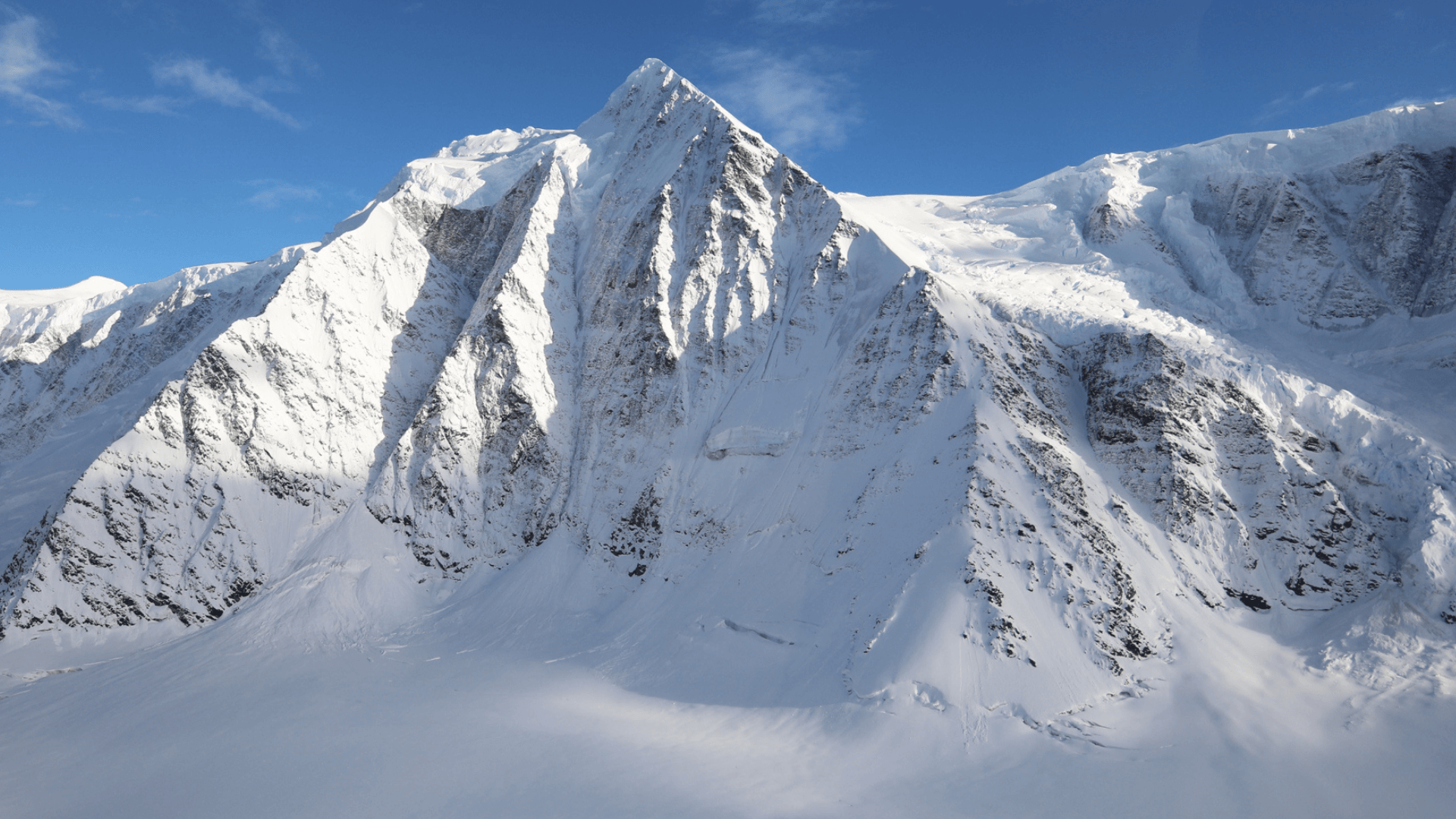Overview
The U.S. Army Engineer Research and Development Center (ERDC) Cold Regions Research and Engineering Laboratory (CRREL) seeks to collaborate in the development of advanced tools that enable a better applied understanding and prediction of snow conditions in cold regions environments. A total of up to $5.5 million is available in multiple awards for solutions that deliver new remote sensing and prediction tools and/or methodologies for snow covered regions.
Project Objective
The primary objective of this request for proposals is to develop new solutions or advance existing partial solutions to deliver full solutions addressing one or both of the focus areas below.
Requirements
ERDC invites pre-proposals that introduce solutions addressing one or both of the focus areas. Specific requirements for each focus area are elaborated below. To be considered, a pre-proposal must clearly identify whether it is addressing Snow Integrative and Predictive Solutions or Solutions for Snow Operational Field Properties to Support Mobility, or both focus areas (see Focus Areas below for additional details regarding requirements). The pre-proposal should clearly state the nature of intended end state of the solution, specifically: New technology; New process; New method; New application of existing technology, process, or method.
All potential solutions will be considered against the program requirements and technology readiness levels. Multiple awards may be considered.
Note: Submissions should NOT include confidential or proprietary details.
Focus Areas
ERDC seeks solutions (such as a novel new methodology, etc.) that integrate datasets (direct field observations across large regions of snowpack in Arctic and sub-Arctic environments) into modeling and software platforms and applies machine learning to generate predictive landscape level analyses and enhanced resolution snow properties derived from remote sensing data. In seeking to address this aspect of snow impacts on conducting and sustaining operations in snow covered regions, the military is broadly concerned with capabilities that address:
- Determine the condition of the snow surface and the subsurface including underlying ground conditions
- Provide estimates of snow water equivalent at enhanced resolutions from remote sensing data including passive microwave derived products
- Provide estimates of the engineering properties derived from sensors penetrating snow and ice
- Derive depth-integrated properties; integrate these findings in models and make predictions
Requirements: Proposals should explain how solutions will achieve the following requirements:
- The solution should integrate datasets (direct field observations across large regions of snowpack in Arctic and sub-Arctic environments) into modeling and software platforms. CRREL can provide example datasets for selected vendors to use in solution development.
- The solutions shall apply machine learning to generate predictive landscape level analyses and enhanced resolution snow properties derived from remote sensing data.
- The solution should be user friendly, so that a range of operators would be able to use the platform to interrogate the model results (i.e., areas of interest and available data should be easily accessible through a GUI or other easily operated system that does not require a specialized technical background to operate).
- The solution must be non-static, updateable, and predictive.
- The solution shall include guidance for usage, tailoring, updating, applying data-streams, training sets, etc.
ERDC seeks solutions that provide techniques to minimize the amount of sensing and flight resources (for airborne collections under 10,000 ft) over cold regions terrain needed to assess avenues of approach on the ground. Relevant terrain conditions and properties include snow conditions, soil freeze/thaw, state of horizontal infrastructure, and candidate surrogates for horizontal infrastructure (e.g., frozen water bodies that can bear military operations). The solutions should also develop remote sensing products quantifying their value added in mobility-related indications, e.g., snow depth and density, soil freeze/thaw, pond ice thickness, etc. In seeking to address this aspect of snow impacts on conducting and sustaining operations in snow covered regions, the military is broadly concerned with capabilities that address:
- Optimize use of resources for wide-area data collection over cold regions from ground, airborne and satellite platforms
- Quantify the value of different sensor modalities in terms of information requirements
- Provide techniques for identifying horizontal infrastructure vulnerabilities and mitigating terrain conditions
- Planning tools and collection management aids
Requirements: Proposals should explain how solutions will achieve the following requirements.
- Provide a solution that uses terrain analysis data, e.g., terrain discretization, climatology, etc. to reduce airborne platform use requirements (flight paths and sorties under 10,000 ft) for missions where operators are estimating surface properties relevant to military operations
- Quantify the value of different sensor modalities in terms of reducing uncertainty in characterizing terrain surface properties
- Provide techniques for identifying horizontal infrastructure vulnerabilities and surrogate terrain features or conditions that mitigate those vulnerabilities
- Provide methods, e.g., planning tools and decision management aids, to optimize collection for sensing technologies and platforms across multiple scales and terrain information requirements
Project Manager
Cold Regions Research and Engineering Laboratory (CRREL), U.S. Army Engineer Research and Development Center (ERDC)
Background
Mobility over snow-covered regions can be challenging without advanced understanding of the different kinds of snow ground cover conditions. During the late winter freeze-thaw period, dirt roads and adjacent lands can prove impassable due to snow melt and spring rains until thawing completes and the land dries out. These challenges impact all forms of travel over snow, including military-class vehicles.
Solutions are being sought to provide real-time and predictive information in a timely fashion to support warfighter planning and decision-making.
Estimated Government Funding Profile
Focus Area 1: Snow Integrative and Predictive Solutions: Up to $3,500,000 for Phase II
Focus Area 2: Solutions for Snow Operational Field Properties to Support Mobility: Up to $2,000,000 for Phase II
*Multiple solutions may be awarded under both focus areas.
Estimated Period of Performance
Estimated up to 12 months for delivery of Phase II solutions.
Phase III unfunded options TBD; period of performance based on scope.
Desired End State
Effective solutions that provide new remote sensing and predictive tools or methodologies for snow-covered regions will enable timely planning and decision-making for the warfighter.
Evaluation Criteria
Submissions will be reviewed based on the criteria described in ERDC’s CSO Solicitation document by ERDC subject matter experts. Submissions may be shared as appropriate with other ERDC stakeholders. The government has the authority to decline all submitted proposals. The government does not plan to engage in the debrief process outlined in FAR part 15 but will provide feedback to unsuccessful offerors as appropriate and at its discretion.
Notional Project Schedule
Proposed project milestones include:
| October 18, 2024 | Project Announced, Submissions Open for Phase I |
| December 2, 2024 | Question Period Ends, FAQs Finalized |
| December 9, 2024 | Submissions Close for Phase I (Deadline Extended) |
| December 10, 2024 | ERDC Evaluation Period for Phase I |
| January 6, 2025 | Participants Selected for Phase II are Notified by ERDC |
| February 3, 2025 | Phase II Full Proposal Deadline |
| February 4-14, 2025 | Phase II Full Proposal Evaluation Period |
| March-April 2025 | Anticipated Phase II Awards |
*Dates may vary to accommodate project team and participant availability.
Project Security Classification
Unclassified
How to Participate
- Review CSO Solicitation document
- Review FAQs
- Complete the submission form
Submission Instructions: This solicitation is issued consistent with the authority granted to the U.S. Army Engineer Research and Development Center (ERDC) through the establishment of its Commercial Solutions Opening (CSO), W913E524SC001. Submissions must follow the requirements as detailed in the CSO Solicitation document.
Questions:
Interested parties may submit questions using this form until December 2, 2024.
Submissions must meet stated requirements and be received no later than 4:00 pm CT on December 9, 2024.
All resultant contracts will be firm-fixed price. All items, technologies, and services (including research and development) procured via this CSO are treated as commercial. The Contracting Officer must determine the price fair and reasonable prior to award. ERDC-CRREL is conducting this project announcement on a full and open basis and intends to award contracts in accordance with FAR part 12 and the FAR part that is deemed most appropriate for the solution proposed (i.e. FAR part 13, 15, and/or 35); the government reserves the right to award prototype agreements (e.g. Other Transaction Agreements), in accordance with 10 U.S.C. 4022, if deemed appropriate and in the government’s best interest.


